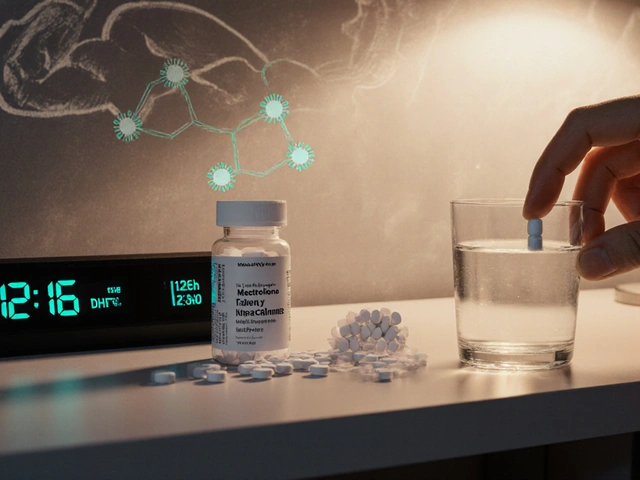Alcohol and Medications: Quick Guide for Safe Use
Ever wonder why your doctor or pharmacist warns you about drinking while taking a prescription? The short answer is that alcohol can change how medicines work in your body. It may boost side effects, block the drug’s benefit, or even create new problems you didn’t expect. Knowing the basics can keep you from nasty surprises and help you enjoy a drink responsibly, if you choose to.
First, think of alcohol as a sneaky friend that shows up at the party of every drug you take. It can speed up how quickly your liver breaks down a medicine, making the dose less effective. Or it can slow down the process, leaving the drug hanging around longer and increasing the chance of toxicity. This back‑and‑forth can happen with pain killers, antibiotics, heart pills, and even over‑the‑counter sleep aids. The result? You might feel drowsier, dizzy, or have a pounding headache when you didn’t plan to.
Common Drugs That Don't Mix With Alcohol
Here are a few drug families that most experts say you should avoid alcohol with:
- Opioid pain relievers (like oxycodone or hydrocodone) – mixing can cause severe breathing problems and extreme drowsiness.
- Anti‑anxiety meds (such as benzodiazepines) – alcohol adds to the calming effect, increasing the risk of blackouts or accidents.
- Antibiotics (especially metronidazole and tinidazole) – you can get flushing, nausea, and a rapid heartbeat.
- Blood thinners (warfarin, also known as Coumadin) – alcohol can swing your blood’s clotting ability up or down, making bleeding more likely.
- Antidepressants (like SSRIs) – alcohol may worsen mood swings and increase side effects like stomach upset.
If any of these sound familiar, pause before you pour that second glass. Even “light” drinks can matter when the dosage of your medication is high or when you have other health issues.
Safe Drinking Tips When You’re on Medication
Want to enjoy a social drink without jeopardizing your treatment? Follow these easy steps:
- Ask your pharmacist – they know the exact interaction profile for each drug and can tell you if any alcohol is safe.
- Start low – if you’re cleared to sip, begin with one standard drink and see how you feel before having more.
- Stay hydrated – water helps your body process both alcohol and medication, reducing the chance of a nasty hangover.
- Watch the timing – wait at least a few hours after taking a dose before drinking, especially for short‑acting meds.
- Read the label – some OTC products (like cough syrups) already contain alcohol, so you could be double‑dosing without knowing.
When you’re unsure, the safest bet is to skip the alcohol until you finish the medication course. It might feel restrictive, but it protects you from hidden risks that can turn a simple night out into a medical emergency.
Bottom line: Alcohol isn’t automatically a deal‑breaker for every prescription, but it does interact with many common drugs. A quick chat with your pharmacist, a clear look at your pill bottle, and a few common‑sense habits go a long way toward keeping you safe and feeling good.
Alcohol can have complex effects on inflammation and health. While a glass of wine might sound relaxing, its impact on your body's inflammatory processes can vary widely. Excessive drinking can lead to increased inflammation, contributing to a range of chronic diseases. Understanding how alcohol interacts with your body's immune system is crucial for making informed choices. Balancing consumption and knowing its effects can help maintain optimal health.
Categories
Archives
Recent-posts
Intra-Articular Steroid Injections: What You Need to Know About Systemic Side Effects and Limits
Dec, 16 2025



 Medications
Medications




